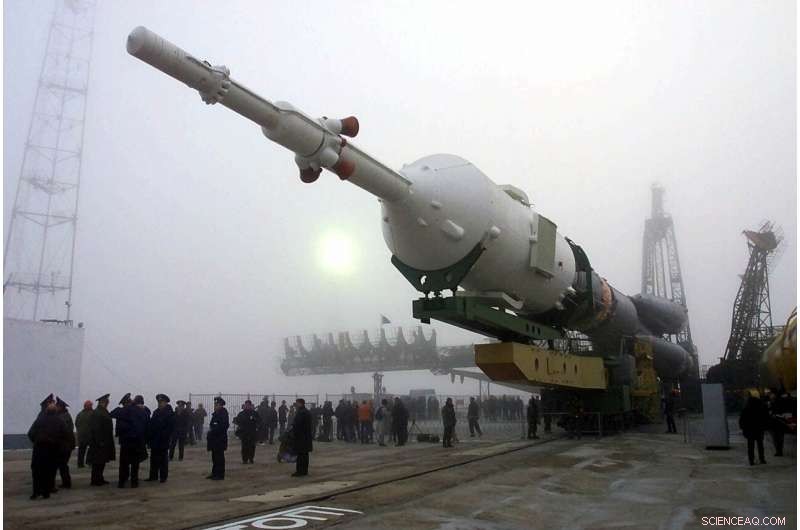
En este 29 de octubre, 2000, foto de archivo, el propulsor Soyuz se transporta a la plataforma de lanzamiento en el cosmódromo de Baikonur en Kazajstán. Dos días después, El astronauta estadounidense Bill Shepherd, y los cosmonautas rusos Sergei Krikalyov y Yuri Gidzenko despegaron para convertirse en los primeros residentes de la Estación Espacial Internacional. (Foto AP / Mikhail Metzel, Expediente)
La Estación Espacial Internacional era un espacio estrecho, húmedo, insignificantes tres habitaciones cuando el primer equipo se mudó. Veinte años y 241 visitantes después, el complejo cuenta con torre de vigilancia, tres baños, seis compartimentos para dormir y 12 habitaciones, dependiendo de cómo se cuente.
El lunes marca dos décadas de un flujo constante de personas que viven allí.
Astronautas de 19 países han flotado a través de las escotillas de la estación espacial, incluidos muchos visitantes habituales que llegaron en lanzaderas para trabajos de construcción a corto plazo, y varios turistas que pagaron su propio viaje.
El primer equipo, el estadounidense Bill Shepherd y los rusos Sergei Krikalev y Yuri Gidzenko, despegó de Kazajstán el 31 de octubre. 2000. Dos días después, abrieron las puertas de la estación espacial, juntando sus manos en unidad.
Pastor, un ex SEAL de la Marina que se desempeñó como comandante de la estación, lo comparó con vivir en un barco en el mar. Los tres dedicaron la mayor parte de su tiempo a convencer a los equipos de que funcionaran; Los sistemas reacios hicieron que el lugar fuera demasiado cálido. Las condiciones eran primitivas comparado con ahora.
Las instalaciones y reparaciones tardaron horas en la nueva estación espacial, versus minutos en el suelo, Krikalev recordó.
"Cada día parecía tener su propio conjunto de desafíos, ", Dijo Shepherd durante un panel de discusión reciente de la NASA con sus compañeros de tripulación.
Desde entonces, la estación espacial se ha transformado en un complejo que es casi tan largo como un campo de fútbol. con ocho millas (13 kilómetros) de cableado eléctrico, un acre de paneles solares y tres laboratorios de alta tecnología.
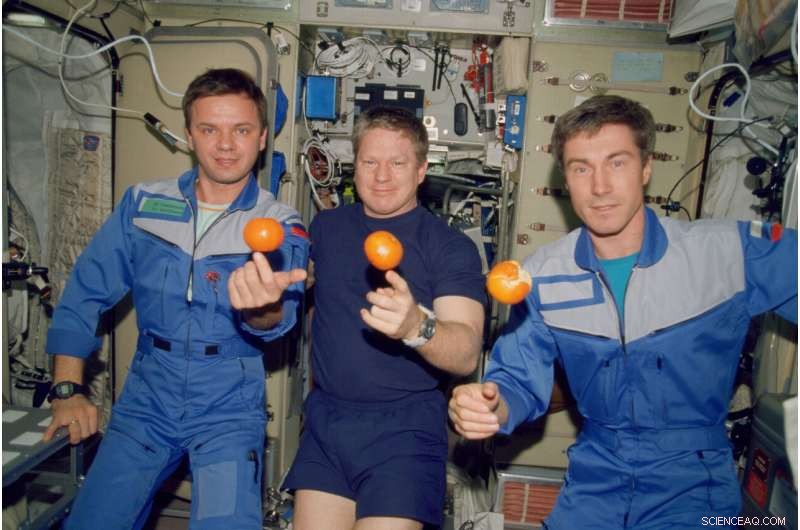
En esta foto proporcionada por la NASA, Los miembros de la tripulación de la Expedición 1 posan con naranjas frescas a bordo del Módulo de Servicio Zvezda de la Estación Espacial Internacional en órbita terrestre el 4 de diciembre. 2000. En la foto, desde la izquierda, son el cosmonauta Yuri P. Gidzenko, Comandante Soyuz; astronauta bill shepherd comandante de misión; y el cosmonauta Sergei K. Krikalev, Ingeniero de vuelo. (NASA vía AP)
"Son 500 toneladas de cosas dando vueltas en el espacio, la mayoría de los cuales nunca se tocaron hasta que llegaron allí y se dispararon, ", Dijo Shepherd a The Associated Press." Y todo ha estado funcionando durante 20 años casi sin grandes problemas ".
"Es un testimonio real de lo que se puede hacer con este tipo de programas, " él dijo.
Pastor, 71, está retirado de la NASA desde hace mucho tiempo y vive en Virginia Beach, Virginia. Krikalev, 62, y Gidzenko, 58, han subido en las filas espaciales rusas. Ambos participaron en el lanzamiento a mediados de octubre de la 64ª tripulación.
Lo primero que hicieron los tres al llegar a la oscura estación espacial el 2 de noviembre, 2000, se prendió las luces, que Krikalev recordó como "muy memorable". Luego calentaron agua para bebidas calientes y activaron el inodoro solitario.
"Ahora podemos vivir "Gidzenko recuerda que Shepherd dijo:" Tenemos luces, tenemos agua caliente y tenemos baño ".
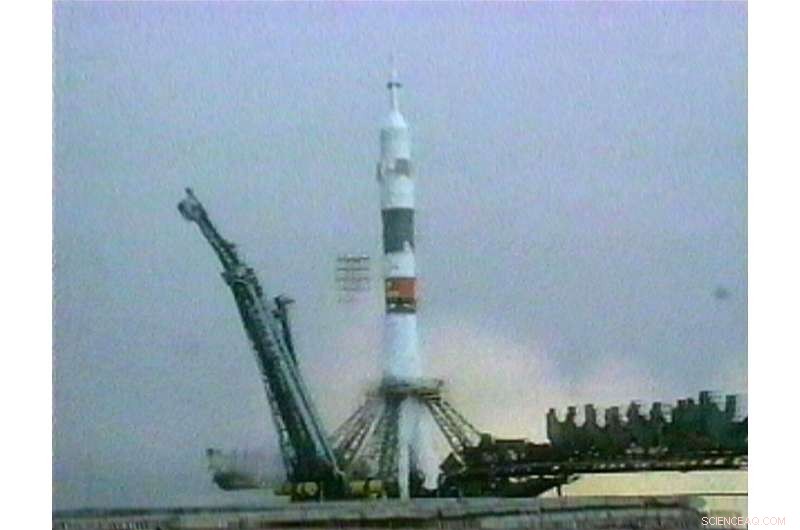
En este 31 de octubre, 2000, imagen de archivo de video proporcionada por la NASA, una nube de humo rodea el cohete Soyuz segundos antes del despegue del cosmódromo de Baikonur en Kazajstán, llevando a los primeros residentes de la Estación Espacial Internacional. Dos días después, El astronauta estadounidense Bill Shepherd, y los cosmonautas rusos Sergei Krikalev, y Yuri Gidzenko llegó a la estación espacial. (NASA vía AP, Expediente)
La tripulación llamó a su nuevo hogar Alpha, pero el nombre no se quedó.
Aunque pionero en el camino, los tres no tuvieron llamadas cercanas durante sus casi cinco meses allí, Pastor dijo:and so far the station has held up relatively well.
NASA's top concern nowadays is the growing threat from space junk. Este año, the orbiting lab has had to dodge debris three times.
As for station amenities, astronauts now have near-continuous communication with flight controllers and even an internet phone for personal use. The first crew had sporadic radio contact with the ground; communication blackouts could last hours.
While the three astronauts got along fine, tension sometimes bubbled up between them and the two Mission Controls, in Houston and outside Moscow. Shepherd got so frustrated with the "conflicting marching orders" that he insisted they come up with a single plan.
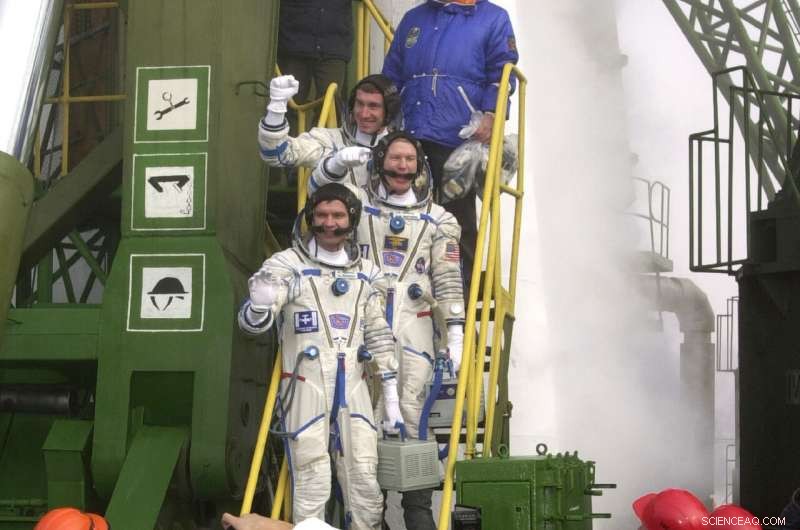
In this Oct. 31, 2000, photo provided by NASA, Expedition 1 crew members, from top, Sergei K. Krikalev, Bill Shepherd and Yuri P. Gidzenko pose for final photos prior to their launch aboard a Soyuz rocket to the International Space Station from the Baikonur Cosmodrome in Kazakhstan. Dos días después, they swung open the space station doors, clasping their hands in unity. Thus began 20 years of international cooperation and a steady stream of crew from around the world. (NASA vía AP)
"I've got to say, that was my happiest day in space, " he said during the panel discussion.
With its first piece launched in 1998, the International Space Station already has logged 22 years in orbit. NASA and its partners contend it easily has several years of usefulness left 260 miles (400 kilometers) up.
The Mir station—home to Krikalev and Gidzenko in the late 1980s and 1990s—operated for 15 years before being guided to a fiery reentry over the Pacific in 2001. Russia's earlier stations and America's 1970s Skylab had much shorter life spans, as did China's much more recent orbital outposts.
Astronauts spend most of their six-month stints these days keeping the space station running and performing science experiments. A few have even spent close to a year up there on a single flight, serving as medical guinea pigs. Shepherd and his crew, por el contrario, barely had time for a handful of experiments.
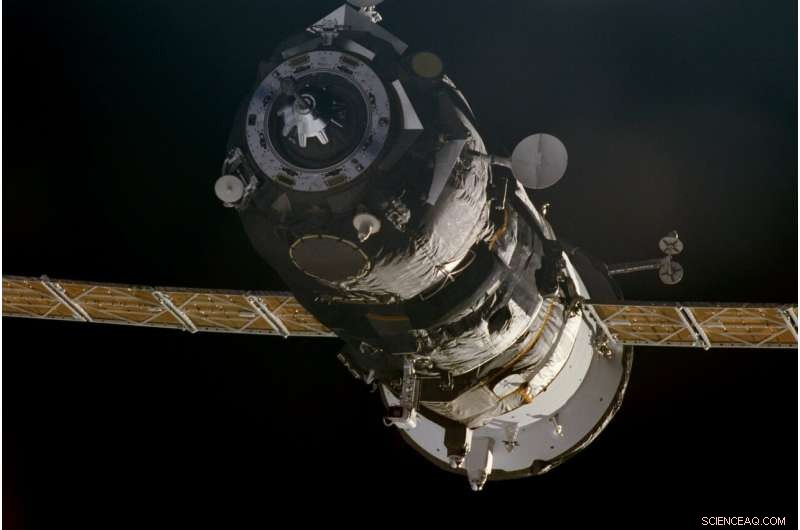
This photo provided by NASA shows a Progress supply ship that arrived on Nov. 18, 2000 to link up to the International Space Station, bringing Expedition 1 commander Bill Shepherd, pilot Yuri P. Gidzenko and flight engineer Sergei K. Krikalev two tons of food, clothing, hardware and holiday gifts from their families. (NASA vía AP)
The first couple weeks were so hectic—"just working and working and working, " according to Gidzenko—that they didn't shave for days. It took awhile just to find the razors.
Even back then, the crew's favorite pastime was gazing down at Earth. It takes a mere 90 minutes for the station to circle the world, allowing astronauts to soak in a staggering 16 sunrises and 16 sunsets each day.
The current residents—one American and two Russians, just like the original crew—plan to celebrate Monday's milestone by sharing a special dinner, enjoying the views of Earth and remembering all the crews who came before them, especially the first.
But it won't be a day off:"Probably we'll be celebrating this day by hard work, " Sergei Kud-Sverchkov said Friday from orbit.
One of the best outcomes of 20 years of continuous space habitation, according to Shepherd, is astronaut diversity.
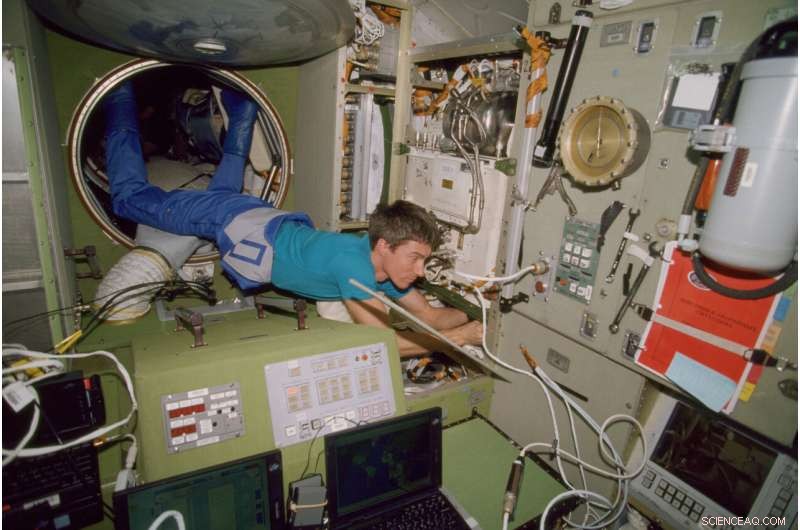
En esta foto proporcionada por la NASA, Expedition 1 flight engineer Sergei K. Krikalev works in the Zvezda Service Module, with his feet anchored in a tunnel hatchway, aboard the International Space Station on Dec. 6, 2000. The space station was cramped and humid with just three rooms when the first crew moved in. Conditions were primitive, compared with now, and the three spent most of their time coaxing equipment to work. In the past twenty years, the space station has morphed into a complex that's almost as long as a football field, with eight miles (13 kilometers) of electrical wiring and three high-tech labs. (NASA vía AP)
While men still lead the pack, more crews include women. Two U.S. women have served as space station skipper. Commanders typically are American or Russian, but have also come from Belgium, Alemania, Italy, Canada and Japan. While African-Americans have made short visits to the space station, the first Black resident is due to arrive in mid-November on SpaceX's second astronaut flight.
Massive undertakings like human Mars trips can benefit from the past two decades of international experience and cooperation, Shepherd said.
"If you look at the space station program today, it's a blueprint on how to do it. All those questions about how this should be organized and what it's going to look like, the big questions are already behind us, " he told the AP.
Rusia, por ejemplo, kept station crews coming and going after NASA's Columbia disaster in 2003 and after the shuttles retired in 2011.
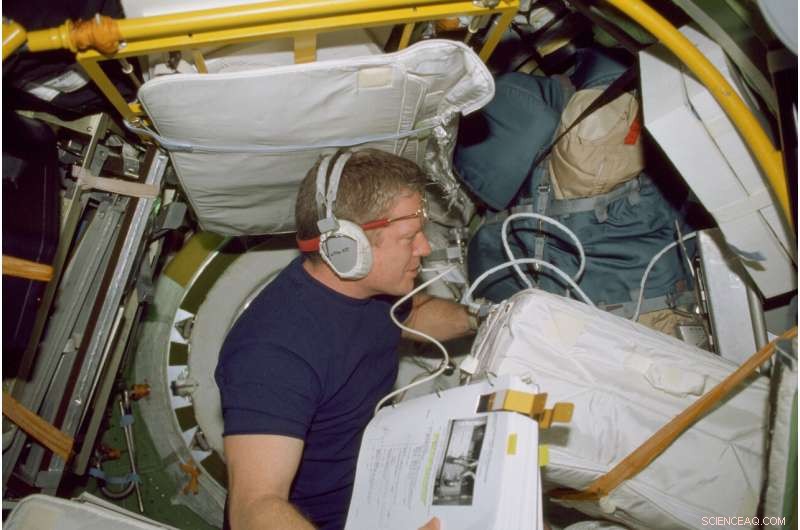
En esta foto proporcionada por la NASA, Expedition 1 mission commander Bill Shepherd works in a docking compartment aboard the International Space Station on Dec. 5, 2000. The International Space Station was a cramped, húmedo, puny three rooms when the first crew moved in. Twenty years and 241 residents later, the complex has a domed lookout, three toilets, six sleeping compartments and 10 rooms, dependiendo de cómo se cuente. (NASA vía AP)
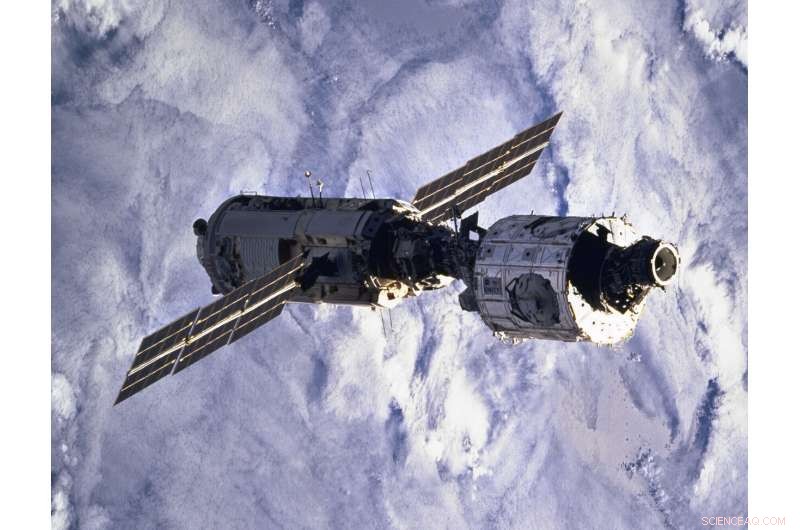
This photo provided by NASA shows the new International Space Station after the crew of the Space Shuttle Endeavour captured the Zarya Control Module, izquierda, and mated it with the Unity Node, Derecha, inside the Shuttle's payload bay. This photo was taken after Endeavour undocked from the space station on Dec. 13, 1998, for the return to Earth. Almost two years later, the first crew—American Bill Shepherd and Russians Sergei Krikalev and Yuri Gidzenko—blasted off from Kazakhstan on Oct. 31, 2000, en route to the space station. Thus began 20 years of international cooperation and a steady stream of crew from around the world. (NASA vía AP)
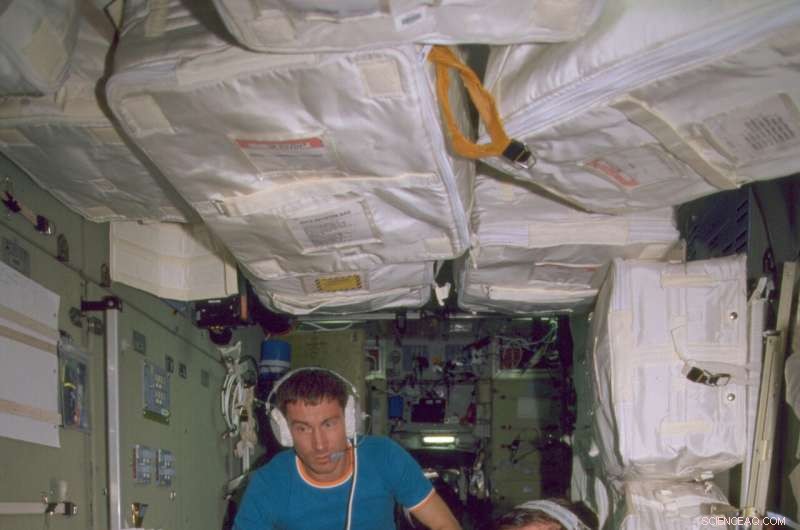
En esta foto proporcionada por la NASA, Expedition 1 crew members Sergei Krikalev, izquierda, and Yuri Gidzenko work in the Zvezda Service Module onboard the International Space Station on Nov. 8, 2000. The first crew, Russians Krikalev and Gidzenko along with American Bill Shepherd, spent most of their time coaxing equipment to work in the cramped and humid three-room space station. Twenty years and 241 residents later, the complex is almost as long as a football field, with six sleeping compartments, three toilets, a domed lookout and three high-tech labs. (NASA vía AP)
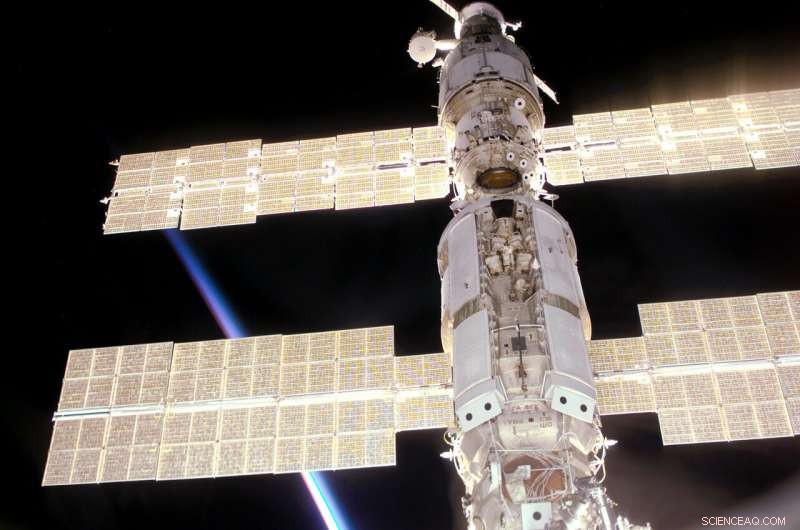
This photo provided by NASA shows the International Space Station as seen from Space Shuttle Atlantis during mission STS-106, which delivered supplies and performed maintenance in September 2000. The first crew of the space station—American Bill Shepherd and Russians Sergei Krikalev and Yuri Gidzenko—arrived less than two months later. Thus began 20 years of international cooperation and a steady stream of crew from around the world. (NASA vía AP)
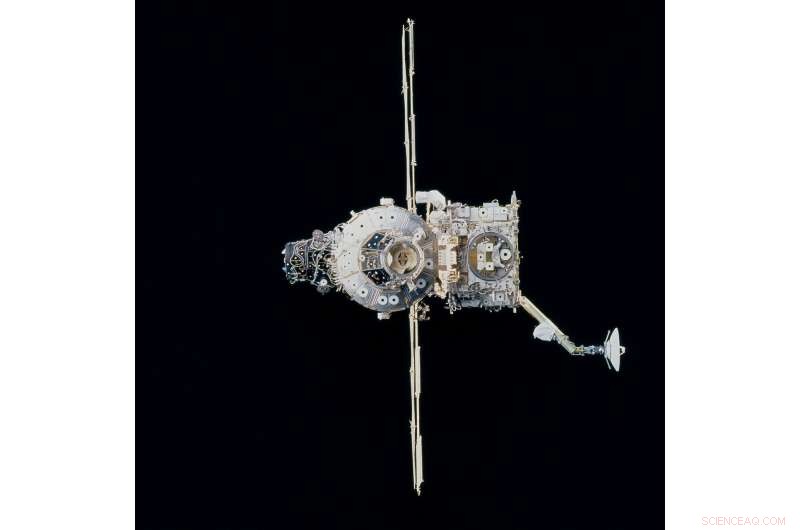
This Oct. 20, 2000 photo made available by NASA shows the International Space Station after separation of the Space Shuttle Discovery. Backdropped against the blackness of space, the Z1 Truss structure and its antenna, as well as the new pressurized mating adapter (PMA-3), are visible in the foreground. (NASA vía AP)
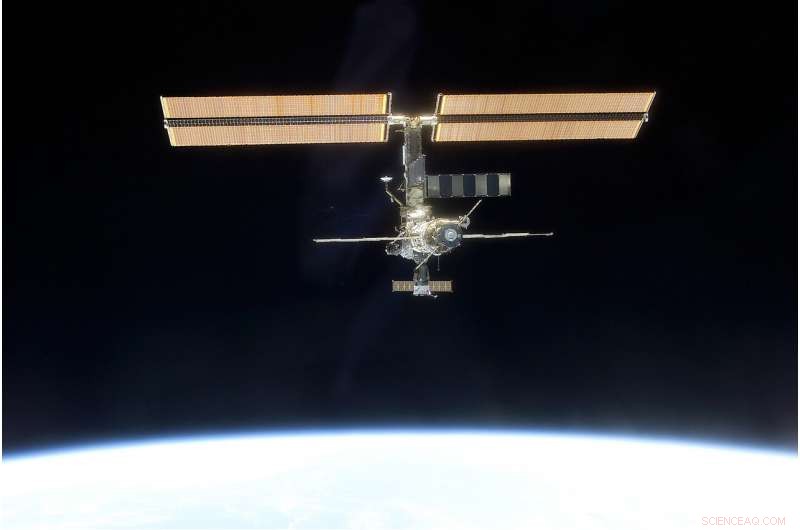
En esta foto proporcionada por la NASA, la estación espacial internacional, backdropped against black space above Earth's horizon, is seen from the Space Shuttle Discovery on March 19, 2001, after a new crew comprised of cosmonaut Yury Usachev and astronauts James Voss and Susan Helms began several months aboard the station. In the early days of the station, it was a cramped and humid, with just three rooms. It's much larger now, with six sleeping compartments, three toilets, a domed lookout and three high-tech labs. (NASA vía AP)
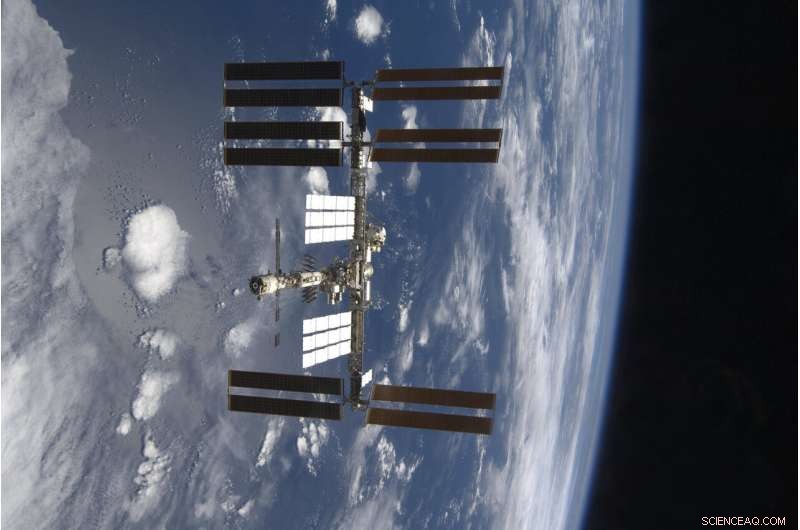
This photo provided by NASA shows the International Space Station as seen from Space Shuttle Endeavour as the two spacecraft begin their relative separation on Nov. 28, 2008. Twenty years after the first crew arrived at the space station, the spacecraft has hosted 241 residents and grown from three cramped and humid rooms to a complex almost as long as a football field, with six sleeping compartments, three toilets, a domed lookout and three high-tech labs. (NASA vía AP)
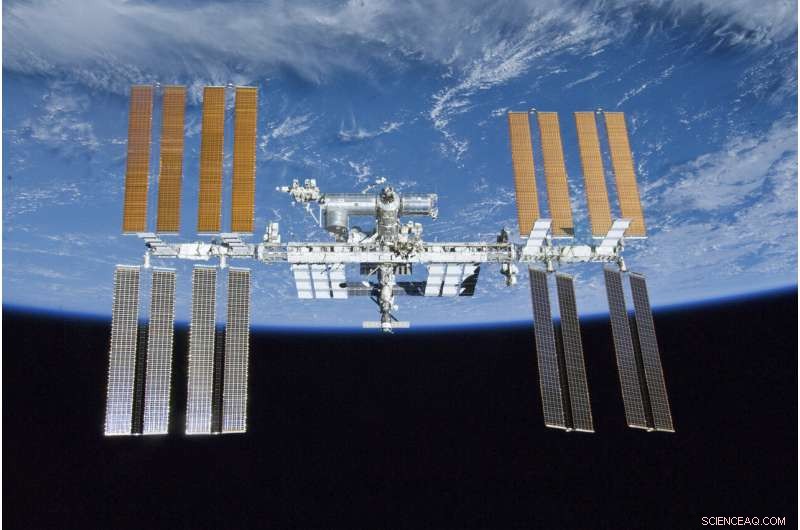
This photo provided by NASA shows the International Space Station as seen from the Space Shuttle Atlantis after the station and shuttle began their post-undocking relative separation on May 23, 2010. Twenty years after the first crew arrived, the space station has hosted 241 residents and grown from three cramped and humid rooms to a complex almost as long as a football field, with six sleeping compartments, three toilets, a domed lookout and three high-tech labs. (NASA vía AP)
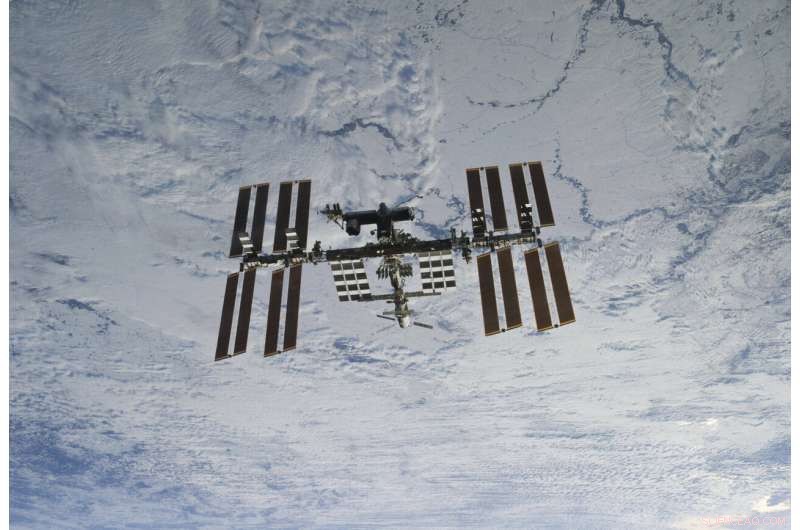
En esta foto proporcionada por la NASA, backdropped against clouds over Earth, the International Space Station is seen from Space Shuttle Discovery as the two orbital spacecraft accomplish their relative separation on March 7, 2011. From the first crew to the most recent, the No. 1 pastime aboard the station is gazing down at Earth. It takes just 90 minutes to circle the world, allowing crews to soak in a staggering 16 sunrises and 16 sunsets every day. (NASA vía AP)
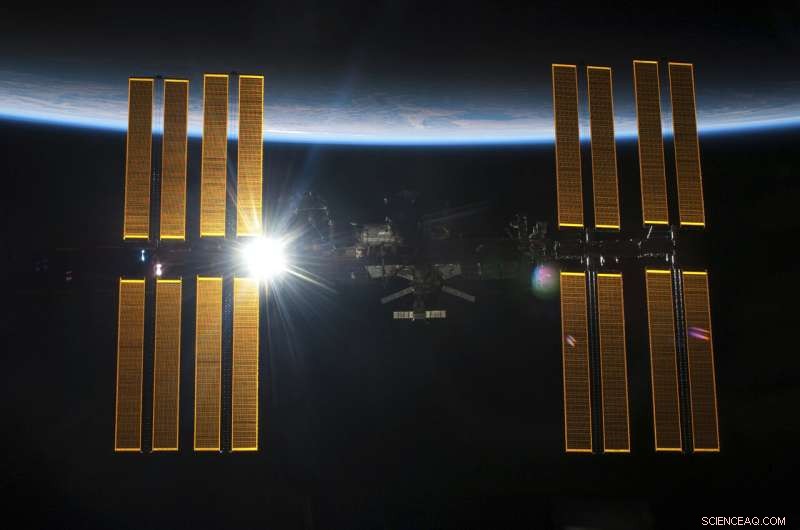
En esta imagen proporcionada por la NASA, the International Space Station is seen from the Space Shuttle Endeavour on May 29, 2011, after the station and shuttle began their post-undocking relative separation. It takes just 90 minutes for the space station to circle the world, allowing crews to see 16 sunrises and 16 sunsets every day. (NASA vía AP)
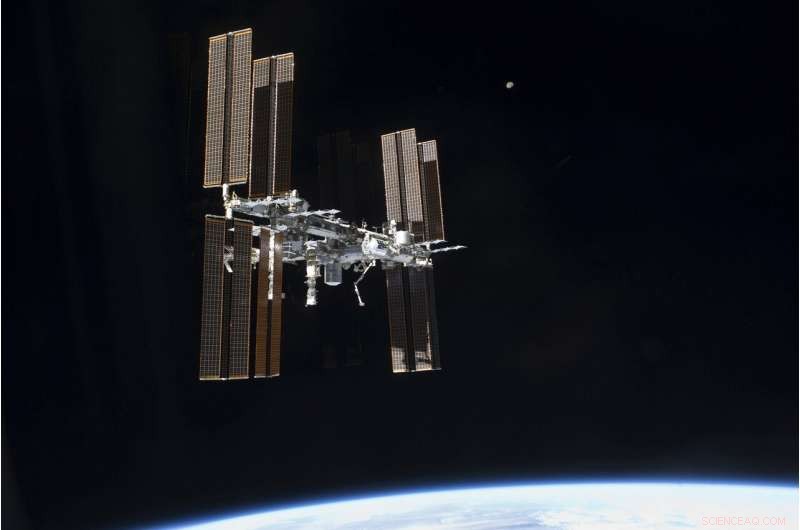
En esta foto proporcionada por la NASA, the International Space Station is seen from the Space Shuttle Atlantis as the two spacecraft perform their relative separation on July 19, 2011. Above and to the right of the space station is the moon far in the distance. (NASA vía AP)
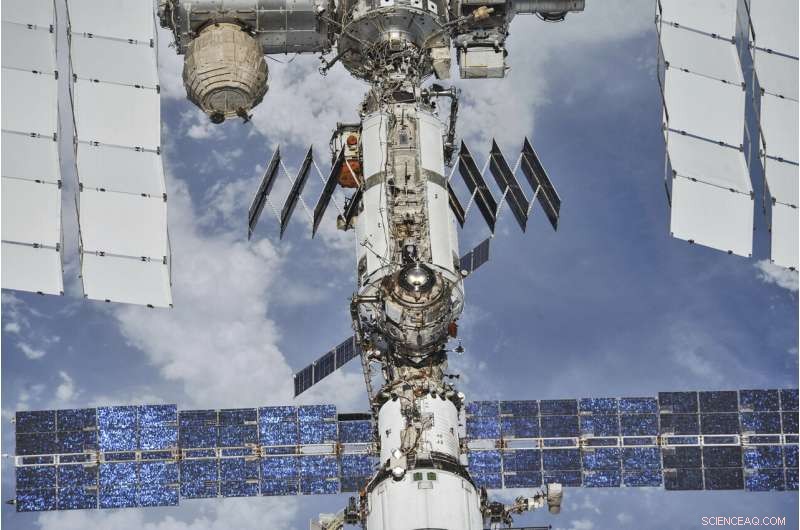
In this photo provided by NASA/Roscosmos, the International Space Station floats above the Earth as seen from a Soyuz spacecraft after undocking on Oct. 4, 2018. NASA astronauts Andrew Feustel and Ricky Arnold and Roscosmos cosmonaut Oleg Artemyev executed a fly around of the orbiting laboratory to take pictures of the station before returning home after spending 197 days in space. Twenty years after the first crew arrived, the space station has hosted 241 residents. (NASA/Roscosmos via AP)
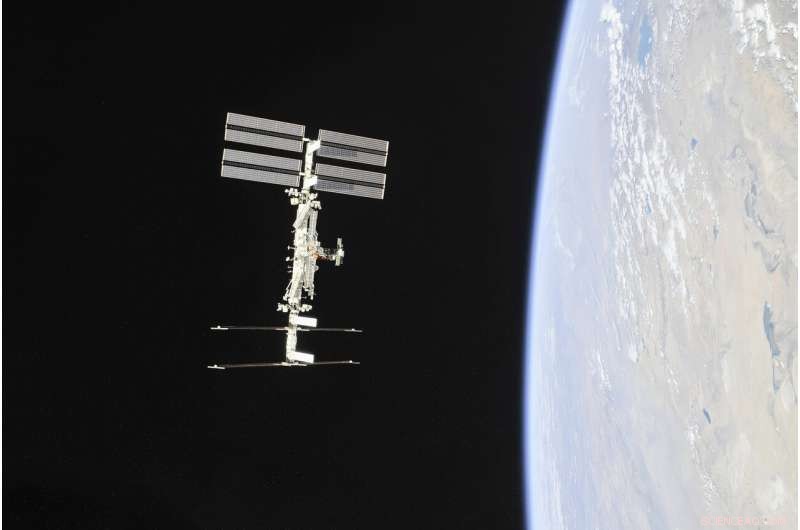
In this photo provided by NASA/Roscosmos, the International Space Station continues its orbit around the Earth as seen from a Soyuz spacecraft departing with NASA astronauts Andrew Feustel and Ricky Arnold and Roscosmos cosmonaut Oleg Artemyev, who had spent 197 days in space. From the first crew to the most recent, the No. 1 pastime aboard the station is gazing down at Earth. It takes just 90 minutes to circle the world, allowing crews to soak in a staggering 16 sunrises and 16 sunsets every day. (NASA/Roscosmos via AP)
When Shepherd and his crewmates returned to Earth aboard shuttle Discovery after nearly five months, his main objective had been accomplished.
"Our crew showed that we can work together, " él dijo.
© 2020 The Associated Press. Reservados todos los derechos. Este material puede no ser publicado, transmisión, reescrito o redistribuido sin permiso.